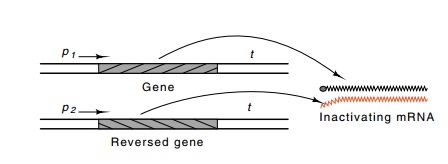Chapter: Genetics and Molecular Biology: Advanced Genetic Engineering
Antisense RNA: Selective Gene Inactivation
Antisense RNA: Selective Gene Inactivation
Learning the in
vivo functions of many gene products is not simple. We do learn the
consequences of defects in humans of those particular proteins that have been associated
with genetic diseases. As seen earlier, however, finding such proteins often
involves huge amounts of work, and therefore relatively few are known. Not even
this tool is available for most gene products or gene products in most
organisms. Is there a general method for determining the function of genes in
other organ-isms? Of course in bacteria, yeast, and sometimes in the fruit fly,
specific genes can be intentionally inactivated, but rarely do satisfactory
meth-ods exist for inactivating genes in other organisms.
Antisense messenger RNA is one method for
inactivating gene prod-ucts. Massive synthesis of an RNA complementary to a
messenger RNA will prevent translation of the messenger by hybridizing to it
before it is translated (Fig. 10.19). Thus the synthesis of the antimessage
inacti-vates the message. First, the gene must be cloned and then the gene or a
portion of it is fused to a promoter so that its induction leads to synthesis
of antimessenger. This antigene construct must then be intro-duced into the
appropriate cells. Genes thought to be important in development have been
examined with antisense messenger, and in some cases have been found to have
drastic effects on the development of the organism.

Figure 10.19 Generation of antisense RNA by inverting a gene or a segmentof a gene and its subsequent hybridization in vivo to the mRNA from the gene, thereby preventing its translation.
Related Topics